Labrador Feeding Demystified: A Comprehensive Expert Guide
The best Labrador food is high in fat and protein, but low in carbohydrates. Great diets avoid fillers, and are packed with healthy vitamins and minerals.
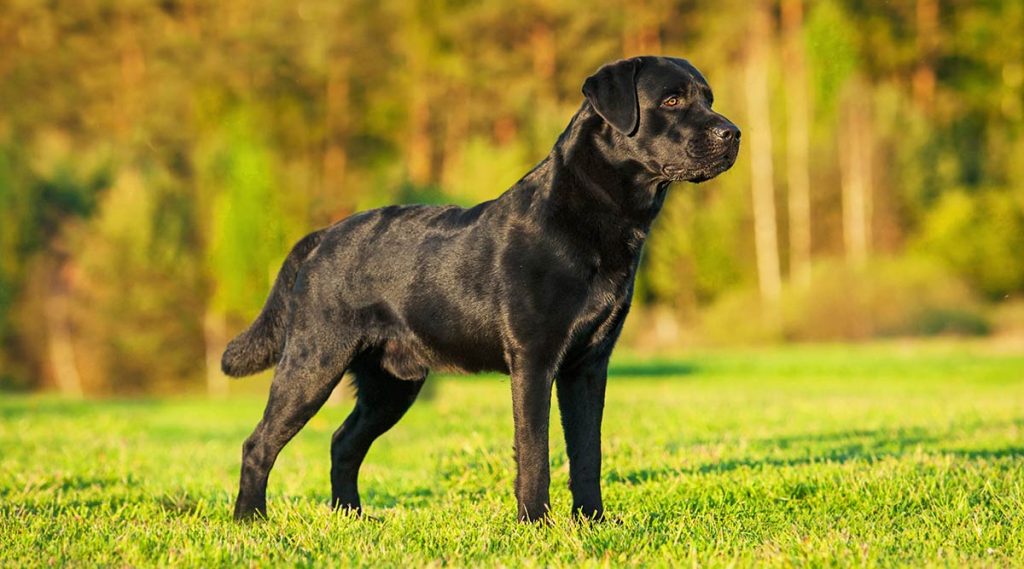
Working out how to feed a Labrador isn’t just about picking the perfect menu though. You know Labs are enthusiastic eaters and prone to weight gain, so getting the right schedule and feeding routine can make a big difference to your pet’s welfare too.
My rule of thumb is that puppies up to six months of age need four meals a day. Adult dogs can cope just fine with two meals a day, but many prefer their daily rations to be broken down into smaller amounts.
- Types of dog food
- How often and much to feed a Lab
- The danger of fast eating
- Table scraps and snacks
I’m going to help you choose the right diet for your dog and answer your feeding questions and concerns about how to feed your Labrador. If your dog is under six months old, you’ll probably want to visit our puppy feeding page for detailed information on feeding your Labrador puppy.
*The products linked in this article were carefully selected by me to be shared on The Labrador Site. If you decide to purchase using the links provided, you’ll be supporting our site by allowing us to earn a small commission on that sale. This is at no extra cost to you.
Labrador Feeding Guide
The amount you feed your Lab will vary depending on his age and the type of food you are giving him. The Eukanuba Adult Breed Lamb and Rice food suggests these serving sizes:
- 40 – 45 pound Lab, feed: 205 – 230 grams per day
- 50 – 55 pound Lab, feed: 240 – 265 grams per day
- 60 – 65 pound Lab, feed: 270 – 300 grams per day
- 70 – 75 pound Lab, feed: 300 – 335 grams per day
- 80 – 85 pound Lab, feed: 330 – 365 grams per day
- 90 – 95 pound Lab, feed: 355 – 395 grams per day
However, these serving sizes will change depending on the food you use, and only apply to dry kibble! Keep reading to find out how much food your Lab needs if he isn’t eating kibble, and when to feed him.
What’s the best dog food for Labs?
Experts agree that the best food for any dog is a balanced diet that keeps him in excellent health at a reasonable price. Unfortunately, that’s where the agreement ends.
There’s lots to choose from
Even experts differ on which method of feeding is the most healthy, what makes a diet balanced, how easy it is to feed your dog a balanced diet, and which brand of kibble is best. By the end of this article, you’ll know everything about how to feed your Labrador.
Different Methods to Feed your Labrador
There are currently two very different approaches to dog feeding that are popular with many Labrador owners.
- Dry kibble
- Raw meat and bones or BARF
Both methods of feeding Labradors have their supporters and detractors. At one time a lot of dogs were fed on canned food with an added biscuit mixer. Nowadays, most pet dogs have dried meals.
Although majority of dogs are now being fed kibble, a substantial minority are fed raw. Raw feeding (the BARF diet) was once considered an extremist fad. But raw fed dogs thrived, and interest in raw feeding dogs has grown lately.
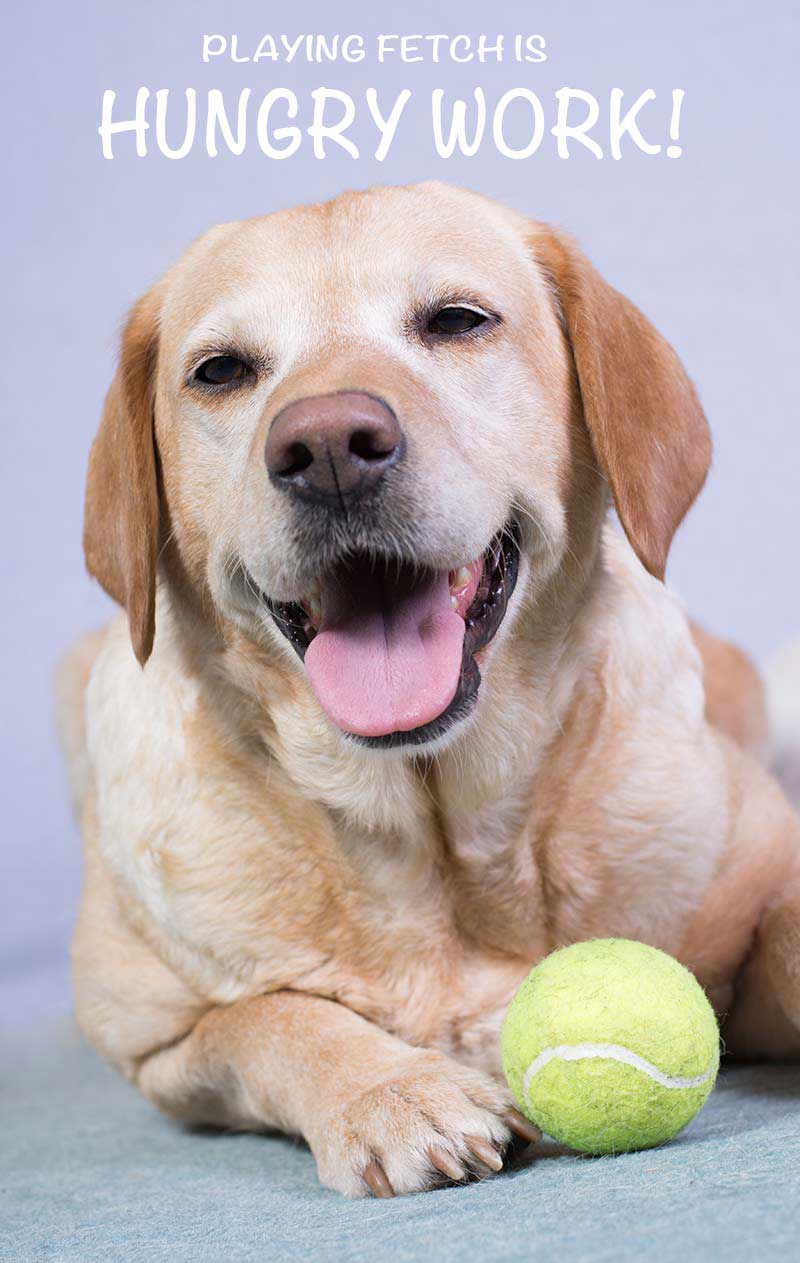
Labrador dog food choices – dry kibble
The majority of Labrador owners feed their dogs on dried kibble pellets. All major pet food companies now supply a dried version of their brands. You’ll find a confusing range of choice in pet stores and supermarkets worldwide. But some are better than others.
Advantages of kibble
The main advantage of being able to open a packet and instantly pour food into your dog’s bowl is convenience. Busy modern homes are pressed for time. Convenience is an important factor.
Kibble also stores well. It doesn’t need refrigerating or freezing and it doesn’t smell very strong. Most dogs nowadays are trained with food. So kibble has the added advantage of making portable training treats.
The disadvantages of kibble
Kibble doesn’t smell bad, but kibble fed dog poops stink. That is partly because kibble is full of fillers, additional bulking agents that are not fully digested by your dog.
These fillers mean that kibble fed dogs produce much greater quantities of poop and much smellier poop, than dogs fed on raw meat and bones. Kibble fed dogs may also need their teeth cleaning on a daily basis. There may also be a small increased risk of bloat in susceptible dogs fed on a dry food diet.
Kibble fed dogs may also be more likely to snack on their own poop (yes it’s a very common Labrador habit) than raw fed dogs.
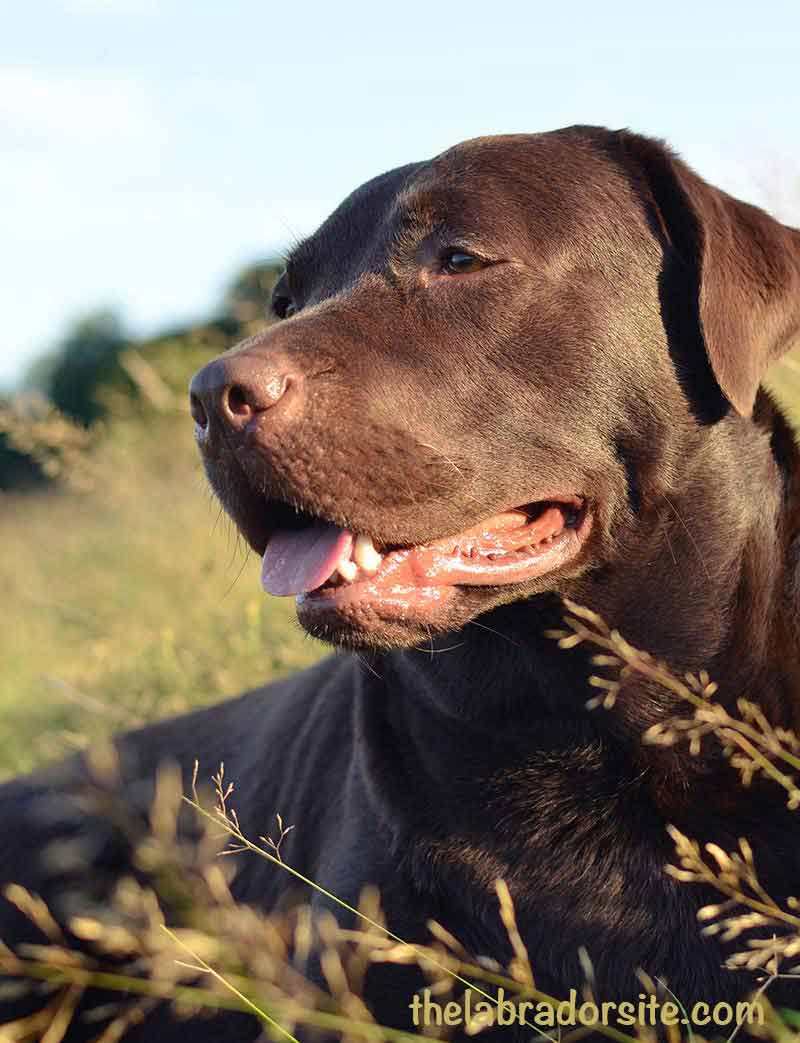
Should I feed my dog raw meat?
Natural raw doggy diets of meat and bones have become increasingly popular, despite some experts giving out dire warnings of the dangers of letting dogs consume bones.
Unfortunately, raw feeding does seem to attract a few extremists. Plus, it can be tricky to find objective and unbiased discussions of the pros and cons of raw feeding on the internet.
The pros and cons
Raw feeding is quite a big topic. It is both complicated and simple. Complicated because we tend to worry about the nutrients our dogs are getting. And we can’t see a list of ingredients on a meaty bone. But the truth is, we don’t need to.
Raw feeding is not as convenient as kibble feeding, It requires plenty of freezer and refrigeration space, a designated preparation surface, and good meat preparation hygiene. (Just as with meat preparation for people).
Small puppies need more research to be raw fed, as they are growing fast and are vulnerable to diets with a poor nutrient balance.
Raw fed dogs and small children
I don’t recommend raw feeding in families with very small children. This is because raw fed dogs get messy. It is hard in this situation to keep raw meat juices containing pathogens, away from children too small to understand the importance of hand washing
The fact is that there is no right way to feed your dog. No ‘best way’ to provide a balanced diet.
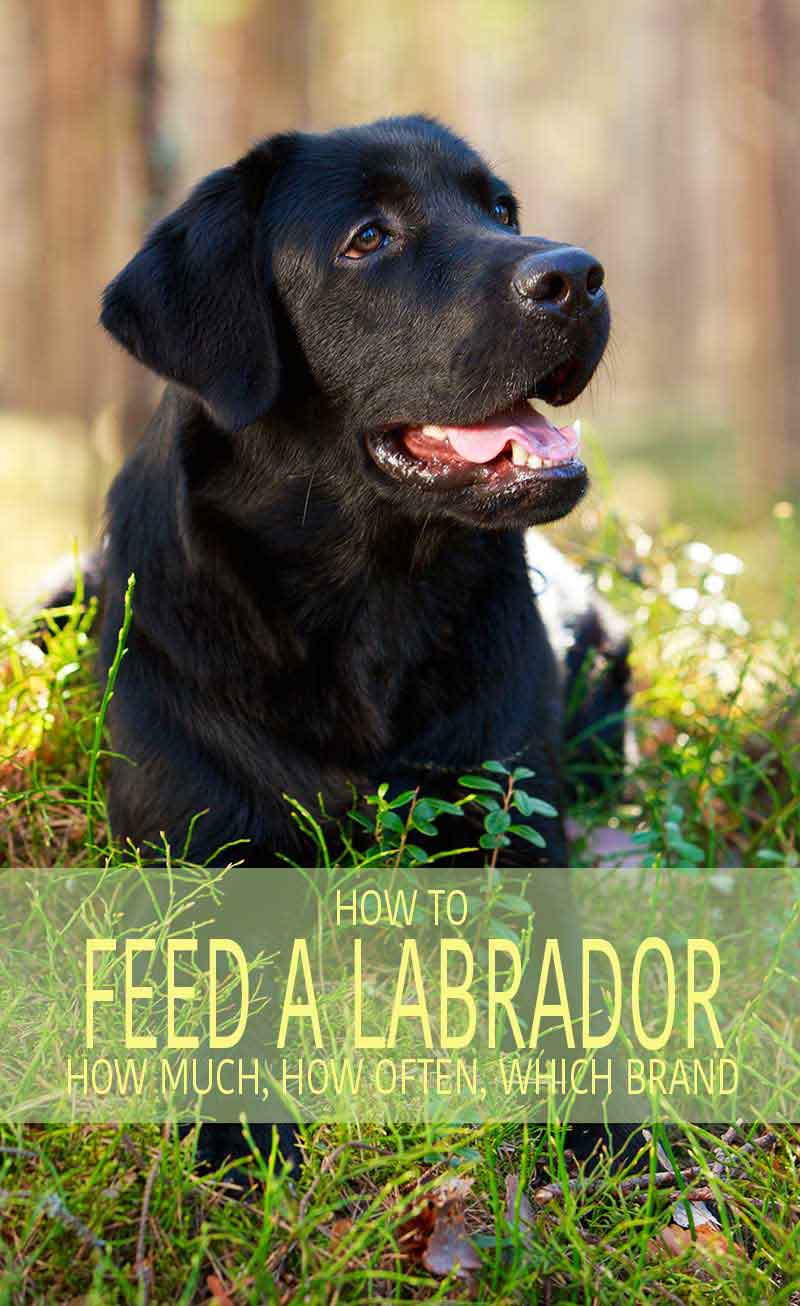
Deciding Between Raw and Kibble
- If you have a small puppy you may be happier feeding kibble
- With children under five, it may be safer for you to feed kibble
- If your dog has a close relative that has suffered from bloat, he may be safer eating raw
- If your dog suffers from allergies, he might do better on raw
Choosing a brand for your Labrador
Cost matters, but choosing the lowest price Labrador food is not always the cheapest option. Very often, you will need to feed larger quantities of the cheaper food. Mid range dog food brands are usually a good starting point, but the most expensive brands can come with a hidden health benefit.
Biologically appropriate kibble?
I like the Orijen brand(paid link)*, it is what my dogs have as training treats or when I can’t provide raw. Orijen is perhaps the closest thing to biologically appropriate food that you’ll find in a kibble at 80% meat and 20% vegetable with no grain at all(paid link)*.
Remember that a change in diet can upset your dog’s stomach. So if you decide to switch brands, do it gradually over the space of a few days by adding a little more of the new food and a little less of the old, each day.
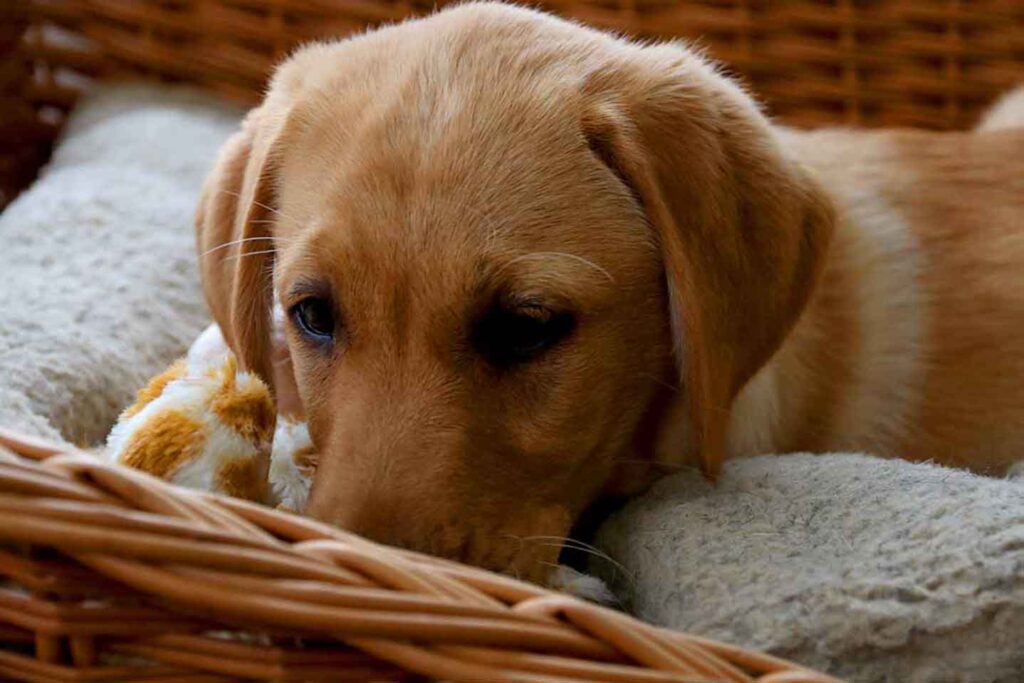
How often to feed your Labrador
Many dog owners continue to feed their dogs twice a day throughout their lives. Some people feed their dogs once a day after twelve months of age.
We do know that there is an association between bloat and large meals. Though this may only apply to kibble. Once daily feeding is probably fine if you decide to feed raw meat. But with kibble it may be too much dry food in one go. I recommend that you feed your adult dog morning and evening.
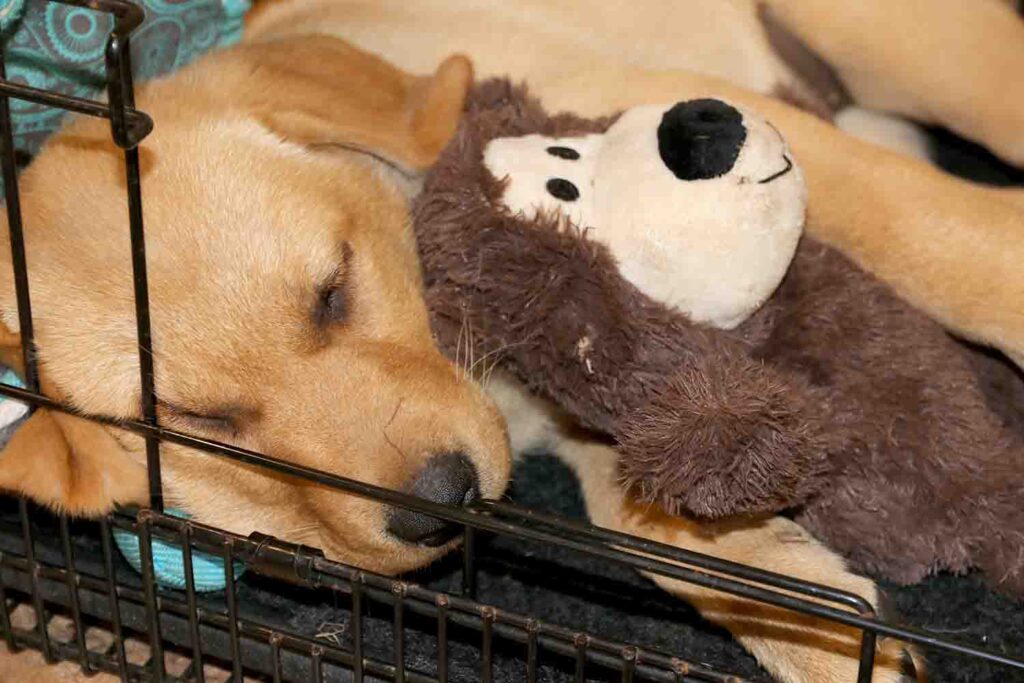
How often to feed Labrador puppies
The amount of food that your Labrador puppy needs(paid link)* to eat each day must be divided into several portions. If you try and give him the whole day’s ration in one go, he will probably give it his best shot. But it will almost certainly give him diarrhoea and could damage his stomach as kibble swells after drinking.
From eight to twelve weeks your puppy will benefit from four meals a day. Breakfast, lunch, tea and supper. Space the meals at least three hours apart to give him chance to digest them properly. And make sure the last meal is a two to three hours before his last trip to the toilet at bedtime.
Once your puppy gets to three months old you can divide his daily ration into three portions, and by six months to two. Breakfast and supper.
How much to feed your Labrador?
Recommended quantities can be found on kibble packaging and these will vary quite widely from brand to brand. They are also often on the high side. If your dog is a little overweight, feed about a third less than recommended for a few days and then re-assess his appearance. Your dog may well need less food than you think.
How long should your dog take to eat his dinner?
Some people leave food down for their dog’s to ‘graze’ on. I prefer my dogs to eat their meals up fairly quickly. Some dogs are more likely to be ‘picky’ if they know they can come back to their dinner later on. I recommend you take up your dog’s bowl after ten minutes if he hasn’t finished. He won’t come to any harm if he hasn’t devoured the lot.
How to feed a Labrador slowly
A much more common problem in Labradors, is the dog that scoffs his dinner in a heartbeat and then begs for more with pleading eyes. There is an association between bloat and rapid eating, so if you can slow down your dog a little, it is probably good thing. The best way to do that is by using a slow feed bowl(paid link)*.
Feeding household scraps and left overs to dogs
Many people will add household scraps to their dog’s dinner bowl. In theory, there is a risk that this will ‘unbalance’ his diet. In practice, most adult dogs will come to no harm if they occasionally get some ‘extras’ in their bowl.
Make sure that your leftovers don’t contain sugar, onions, cooked bones or any common human foods that are toxic to dogs. And to keep the diet balanced, make sure that left overs don’t comprise more than 10% of your dog’s dinner.
Giving leftovers to puppies
Puppies need a very well balanced diet, so it is not a good idea to feed your puppy on household scraps.
Dog feeding equipment and storage
Good dog feeding bowls are dishwasher safe and not easily breakable. Cheap and colorful plastic bowls can look tired after a few trips through the dishwasher, so I like stainless steel(paid link)*. Although I admit it is quite noisy, and not as pretty as some of the ceramic products. Avoid raised bowls if possible as some studies have associated these with bloat.
For kibble storage I recommend sealable bins(paid link)*, which you can fit large quantities of dried dog food into and keep fresh.
Giving water to your Labrador
Puppies and older dogs need water available to them at all times during the day. It is ok to take your puppy’s water away an hour before bedtime to help with housetraining.
Kibble fed dogs drink quite a lot of water, raw fed dogs drink very little.
When feeding problems need veterinary help
All puppies need regular veterinary check ups and when you take your puppy to the vet for his vaccinations. This is a great time to ask any questions you might have on his diet and welfare generally.
All dogs may eat less in very hot weather. But changes in appetite, especially sudden changes, can be a sign that your dog is not well. If your Labrador goes off his food, don’t just put it down to old age.
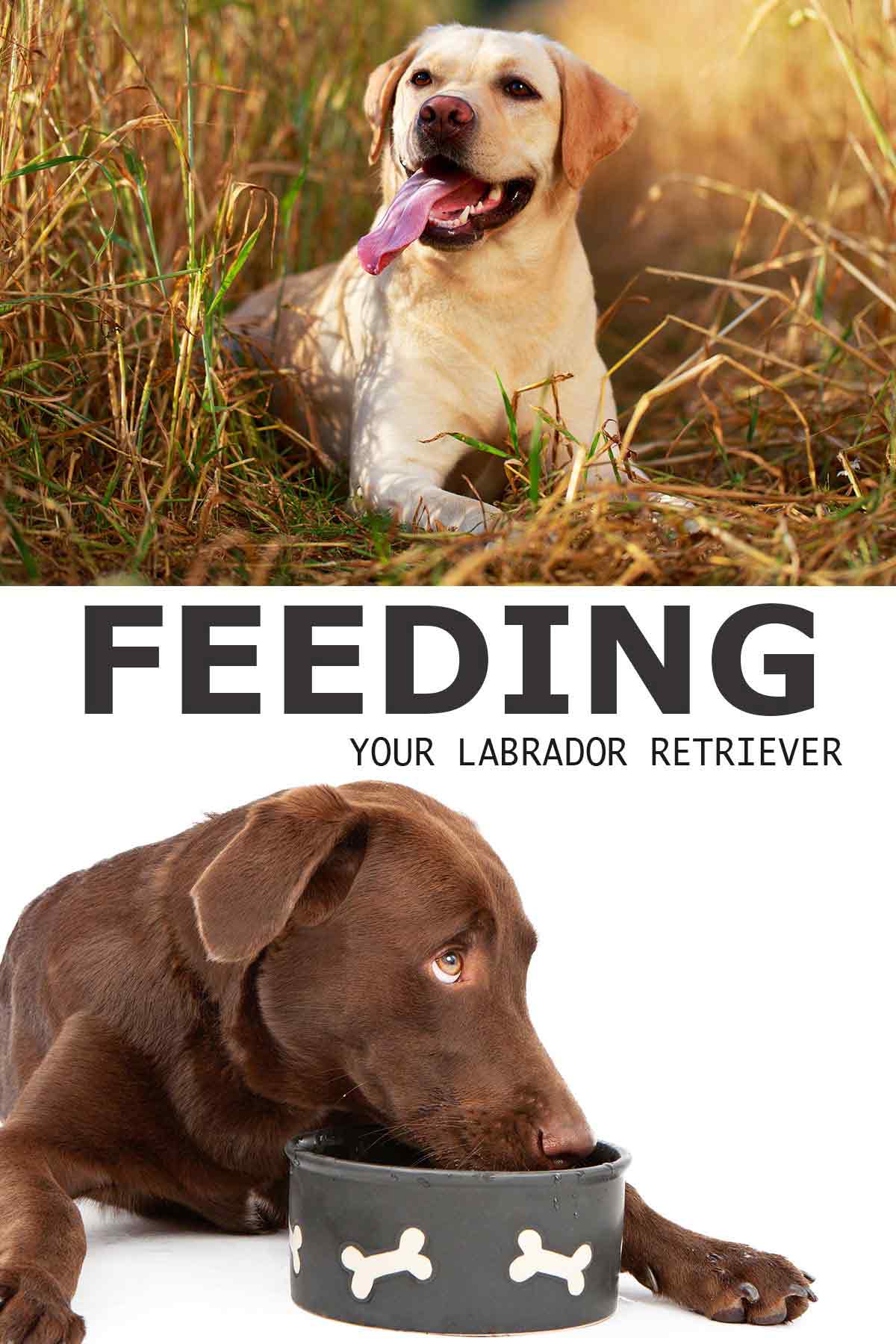

Free Labrador Updates!
Get my training tips, news, reviews, and the latest from The Labrador Site delivered to your inbox



Our laboratory retrievers 30 lb one year and 4 months she’s very picky on what she eats we’ve done dry food and she won’t touch it we’ve done wet food she’s not touched it any suggestions
Hello I have a Labrador he weighed 108 pounds the big boy the vet said he is OK but he does have allergies I have taken him off of poultry he seems to be doing OK on that but he still seems to have your problem is he yours are not red but he keeps shaking his head like the allergies are still affecting him is there anything I can do change his food I was told to get them on some kind of like white fish food the oil‘sWould be good
My lad is 1.5 years old and is neutered. I used to feed him with Origen until he turned 1, but then our vet advised that high protein food is not suitable for dogs who do not exercise at least 2-3 hours a day as it could cause kidney and liver problem in time. Also when we had the lab nurtured they again advised on low protein diet to avoid weight gain. So we have been feeding him with the vet series of Purina Pro Plan Derma ever since. He seems happy and in good shape. However, I hate that the food is full of grain and rice but at the same time how to keep a low protein diet for neutered dogs that is not full of grain? I cannot do the math. Please advise. I’m happy to hear a different opinion. Raw diet is out of the question in our case.
I have 5.5 year old English Lab. I recently started cooking her food. She has lost quite a bit of weight since the diet change. I’m worried that I’m not feeding her enough. I cook a pound of ground beef, ground turkey or ground chicken. I mix the pound of meat with 2 cups of cooked rice and 2 cans of vegetables (either green beans and carrots or spinach and carrots). I crush up 5 hardboiled eggs in with it all. Once it’s mixed I divide it into 2 cup portions and feed that to her in the morning and the evening. I add a couple of scoops of plain yogurt mixed with pumpkin to it as well. Should I be giving her larger portions or a different ratio of food. Thanks…
Hi I have a lab who’s 2 years and 7 months . Took him to vets this week and got him weighted he weights 42.8kg they say his weight is okay could still be a bit more lighter . Now I just want to make sure I am giving him the correct dry food amount for him . I just want to know how much kibble dry food should the dog be having at his age . Would be helpful if could get some advice on this . I give him kibble and a little portion of rice as his poi’s can sometimes be a bit soft .
One of the best NON-biased articlesi have ever read. thank you
P.S. i’ve had dogs over fifty years..
I cant get a straight answer from anyone anywhere. Is it ok to feed my lab grain free food?
Yes, grain free is the best you can get; just be careful the meat product is pure and not the equivalent of road kill.
My dog has been eating purina one Smartblend for years. Now he has an odor to him from the food. What is a brand of food that will not have an odor coming from his body??
When he was a pup, we fed Buddy goat’s milk which he tolerated well but we stopped at about 6 months.
hey i have got a new lab just 8 weeks which food can i give to my lab please guide me
Wondering if anyone will have had a similar experience as me. My 1.5 year old lab mix is a skinny boy. His mother was from trial stock, so he’s definitely a leaner looking lab – not to mention extremely long, tall and leggy. He’s mixed with a little bit of golden retriever, so if anything, you’d think that would have bulked him out a bit. Anyways, he’s always been super lean. Right now he’s just under 75 lbs, but with his lanky frame, he could easily be 80. He was originally on Wellness Core (large breed kibble), but we kept running into gastro problems with him. Towards the end of his tenure on that food, we actually got him up to 77 lbs, and he was looking great. He was having such frequent diarreah though, that we decided to switch to Royal Canin Gastro food for a while at the suggestion of our vet. I wasn’t thrilled about putting him on it, but I was desperate to get his GI issues under control. Within a week and a half on that food however, he was acting ravenous, and suddenly became a poop eater! I did more research, and decided that he likely needed more protein in his diet. We switched him to Orijen, and at first, it worked wonders. His stools were the best they’ve ever been. A little over a week on the new food however, and I noticed he was losing weight pretty rapidly. I upped the amount slowly, and he suddenly had the runs. I know that the food is super rich, and you’re not supposed to overfeed, but if I don’t, he drops weight like crazy – the opposite issue we wanted. So now, I’m trying to over feed him by only a little, but he’s still losing weight, and sometimes has runny poops. 90% of them are perfect. I supplement with rice a lot to try and get some carbs into him so he’s not so boney.
I cannot for the life of me, keep weight on him. The vet told me that he actually looks great, but its so much work trying to keep him at the weight he is now. His poop eating is still not 100% cured, and I want to be able to overfeed him a little so that he doesn’t feel the need to supplement his diet as much. What gives? Should we try switching to Acana? I want to up his portions without making him sick. He seems to do well on these high protein foods, and from what I’ve been reading, Acana is slightly less rich in protein. Maybe overfeeding a touch on a single protein source would be better – such as Acana’s lamb and apple formula.
Side note – he’s a happy, active and sweet boy. No other behavioural issues other than his desire to consume other dog’s poop at times. We supplement his current Orijen diet with enzymes and probiotics.
I want to move my aussie / lab mix over to adult food he is a year old but I have no idea what brand to start off with? hes a very active dog.
4 health dog food we found was the best. Tons of flavors but we stick to chicken flavor. You can get it at tsc!
Hey I have an 2 month old Labrador puppy and we have been putting out 4 portions of kibble a day but he only eats about half is this normal?
How big are the portions? Cut in half a still feed 4 x day. Move to 3x day soon. Helps with potty training